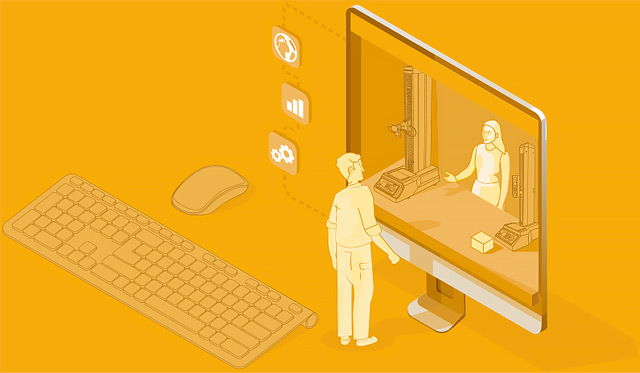Laminated auto windshield perimeter seal peel testing


Solution
- MultiTest 2.5-xt touchscreen-operated software-controlled peel tester
- Loadcell of rated capacity match to peak peel force
- Vice and pinch grips with waveform profile jaw faces and chain to maintain peel angle
Benefits
- Quick and easy-to-use fixtures for reliable testing by any operator
- Secure ‘one-touch’ console control to run the ISO standard test
- Reproducibility company-wide at point of manufacture
Requirement
The windshield (or windscreen) in your car is made of laminated glass, which is designed to offer the highest levels of safety in the event of a crash. A windshield is in essence a glass sandwich made up of two sheets of glass fused to a thin layer of vinyl coating between them. The three pieces are laminated together by applying heat and pressure in a special oven called an autoclave. When a small object, like a stone, strikes the windshield it is typically only the outer layer of the windshield that is damaged. If a big piece of debris hits the glass hard enough to break both inner and outer layers, the tough membrane holds the structure together, prevents catastrophic shattering into sharp glass fragments
As technical advances in coatings and processes gather pace, a new generation of windshield is being implemented—heated windshields without visible wire elements. An electrical current is applied to a multi-layer invisible coating on the interior surface of the glass thereby greatly reducing defrosting and demisting time.
An important part of the process for handling and shipping windshields is the protective film layer applied which must remain completely bonded both to the glass and the rubber-foam seal of the outer frame. A poor perimeter seal can lead to the windshield exhibiting lower mechanical strength, reduced clarity and even premature ageing.
Solution
Mecmesin was consulted by one of the world’s leading manufacturers of windshields, door windows, glass roofs and pre-assembled modules to provide an easy-to-use peel tester to check the strength of their bonded films. The supplier was already equipped with older style test equipment from various producers, which gave them a lot of variability, depending on how the operators used it. By standardising on Mecmesin’s ‘MultiTest 2.5-xt Peel Tester’ and a set of peel-clamps across each of their manufacturing sites they were able to perform consistent, repeatable testing with a high degree of confidence in the reproducibility of the results.
Specimens of 15 mm wide x 100 mm long were prepared, and the lower portion securely held in a vice-grip fitted with wave-form jaws to prevent slippage. The film layer was clamped in a miniature spring-action vice grip and pulled at 254 mm/min (10”/min) to determine the peel characteristics with reference to methods stipulated in ISO 6133. The Emperor software, which drives the Peel Tester, allows the operator to quickly and easily add sample specific information about the windshield such as serial number, position and age. This data, together with the peel strength in N/cm, is automatically included in a report which is exported to the network, enabling rapid and easy comparison of test results between different sites and production lines.
Test equipment
- MultiTest 2.5-xt touchscreen-operated software-controlled peel tester
- Loadcell of rated capacity match to peak peel force
- Vice and pinch grips with waveform profile jaw faces and chain to maintain peel angle















